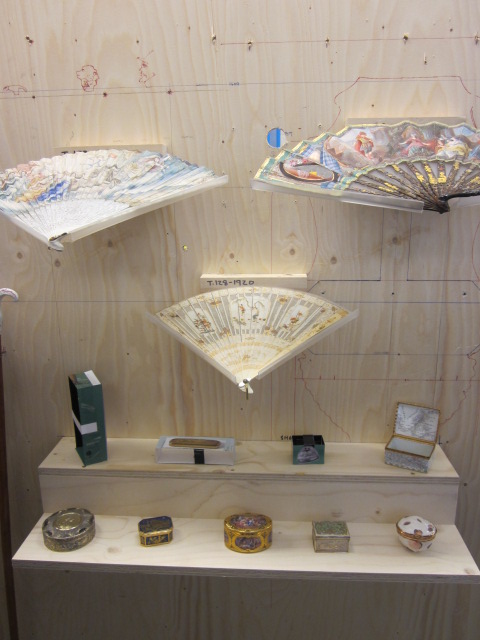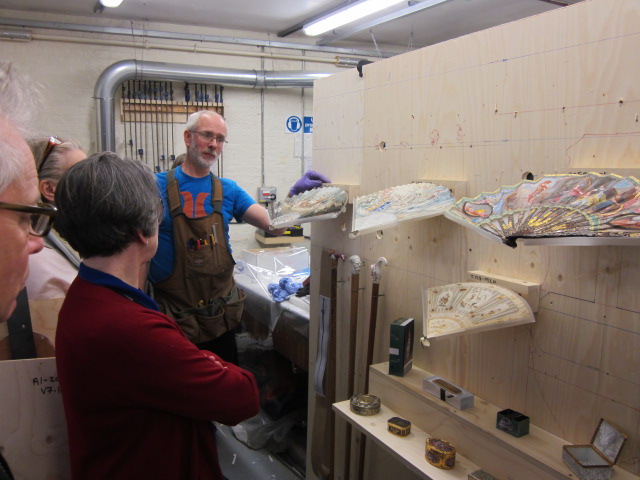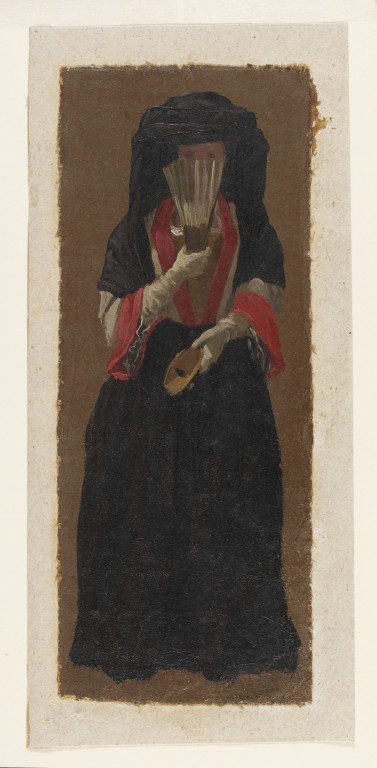
‘Fans can express desires, at times even speak themselves; and what beauty does a fan give in the hands of a Lady who knows to employ it fitly! It can wind like a snake, flutter, point, unfurl, move up and down, according to the situation and circumstances.’
Louis-Antoine Caraccioli, 1757
Fans may well be beautiful when they flutter, point, unfurl and move up and down but when the fans in question are museum objects it is imperative for their conservation that they move as little as possible! Yesterday we held a mock-up of the Accessories display and preventing the fluttering of fans was just one of the concerns to be addressed.
The Accessories display features some exquisite examples of fashionable 18th-century accessories including fans, snuffboxes and canes. These accessories all had practical functions but also made coded statements about fashion, status and wealth. By handling and gesturing with them in certain ways, they could be used by their owners to communicate with others.
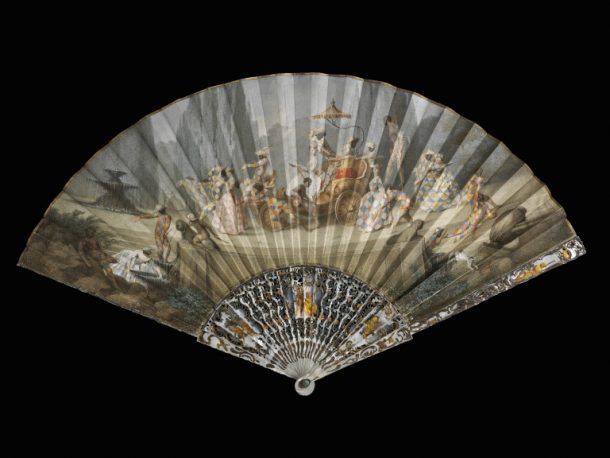
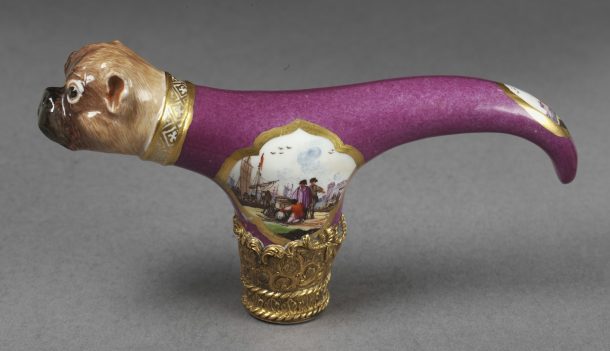
Yesterday was the third mock-up we have carried out for the Accessories display. All of the objects are already selected and the basic layout of the case was decided upon long ago, but it was only now that we had an opportunity to consider the display with the mounts that will be supporting some of the objects. This allowed us to have a very clear impression of how the final display would look and to accurately consider any possible improving rearrangements before the final case interior is made.
Although the selection of objects has barely changed, looking back through our records of previous mock-ups it really feels as though we have come a long way (and not just in terms of mocking-up in different parts of the building).
Back in January 2013 we were in the (rather cold) empty galleries:
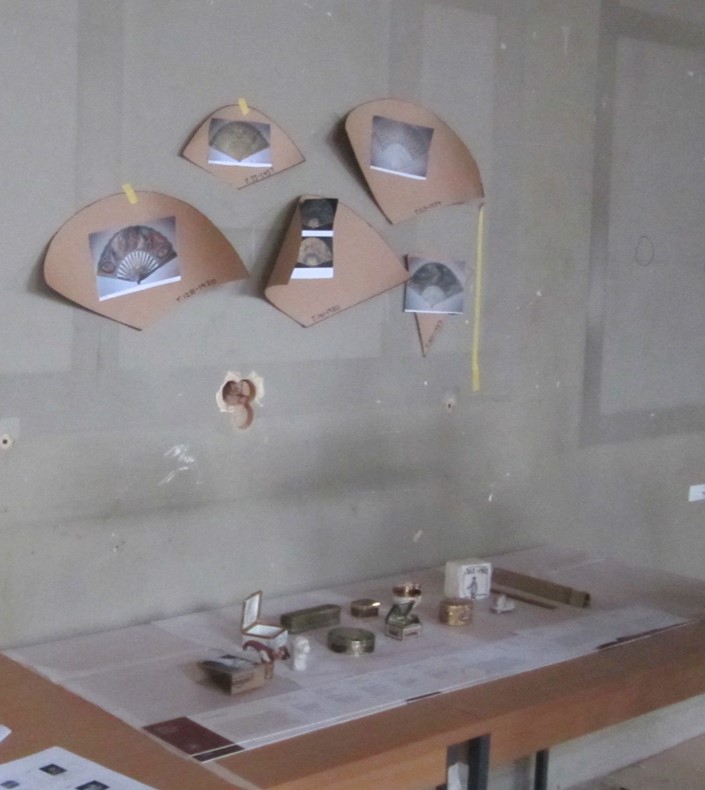
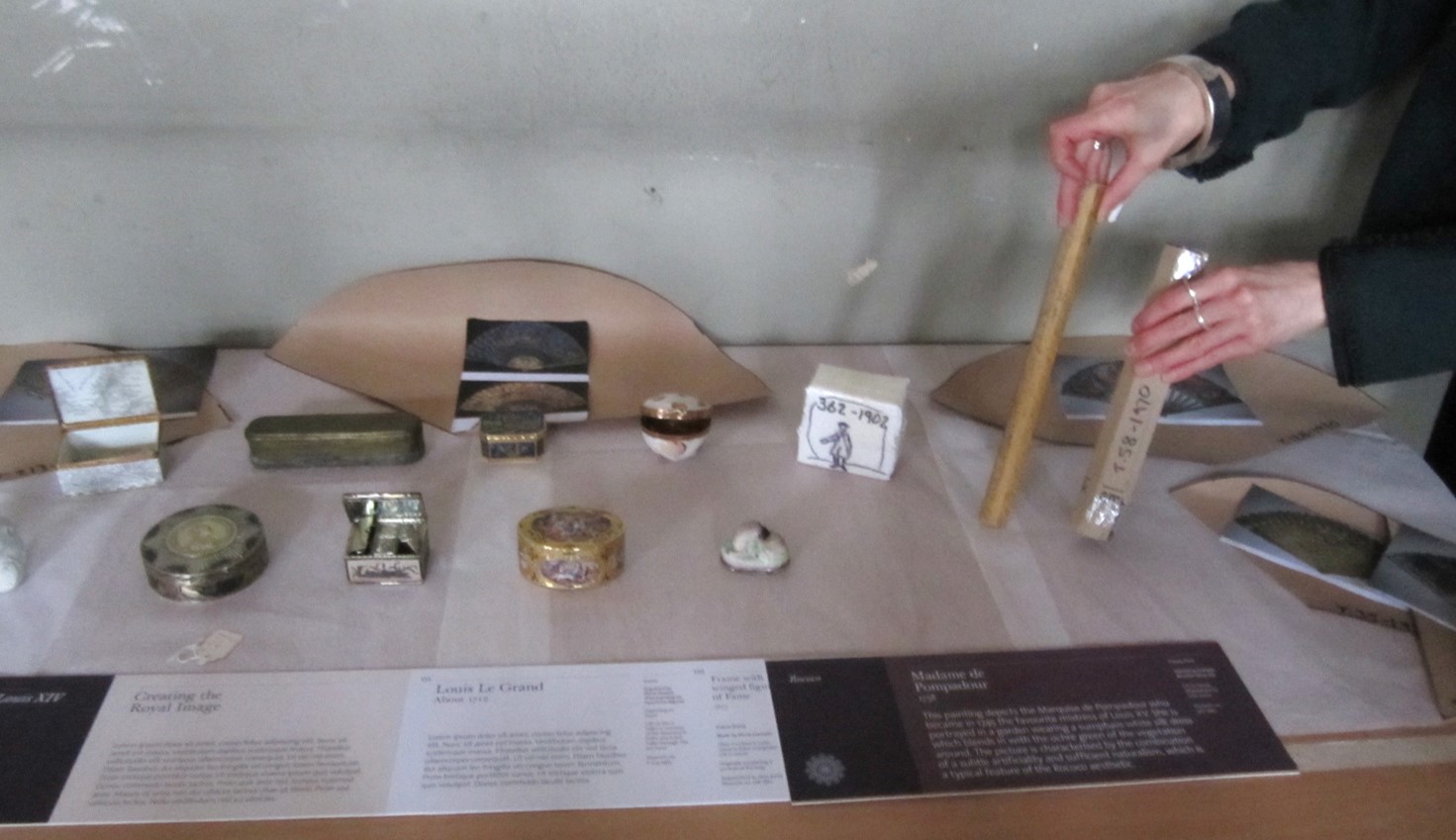
In June 2013, we were able to gather together (nearly) all of the selected objects in the rather more clement surroundings of our departmental meeting room and Paper Conservation studios. This time we had a slightly revised idea for the layout and also wanted to check how best to number the objects for the label strip.
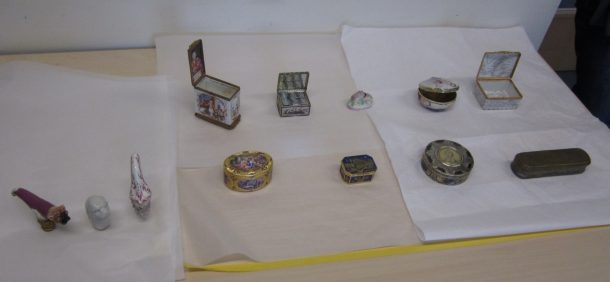
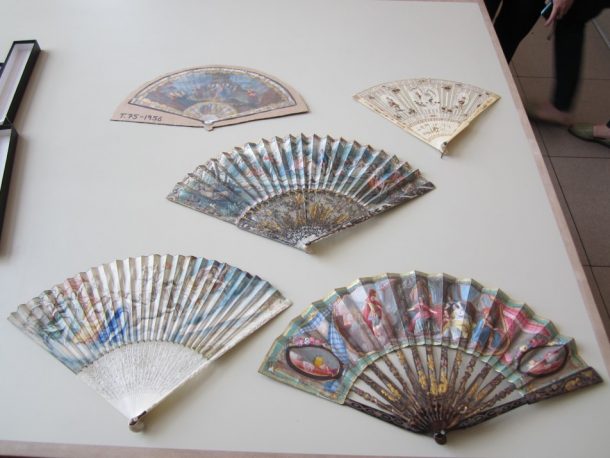
However, when trying to arrive at the optimum arrangement for objects that won’t be displayed on one flat surface, simply laying them out on tables can only get you so far. Yesterday’s mock-up allowed us to move beyond this. It was held in the Mounts Workshop, where Roger has constructed a template of the case backboard, with mounts for the canes and fans and a tiered shelf attached. This meant that we could have an accurate three-dimensional view of how the final display will look.
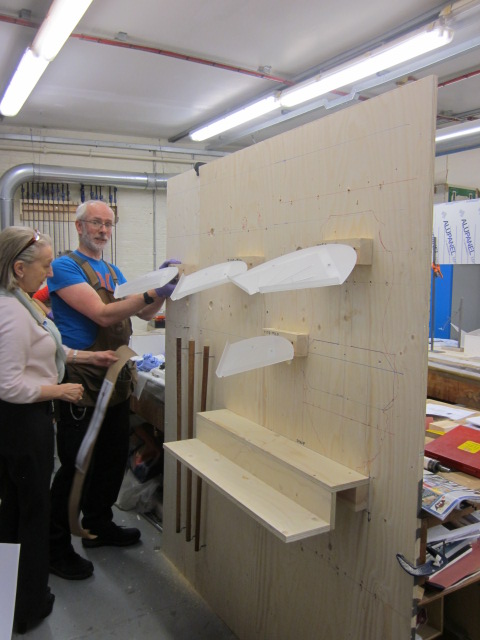
For conservation reasons, the fans cannot by simply displayed vertically on the back of the case. It has been decided that the most appropriate way to display them is to have them lying open on supportive mounts at a specified angle. On the photograph below you can see how the lower edge ‘lip’ of the mounts support the fan guards.
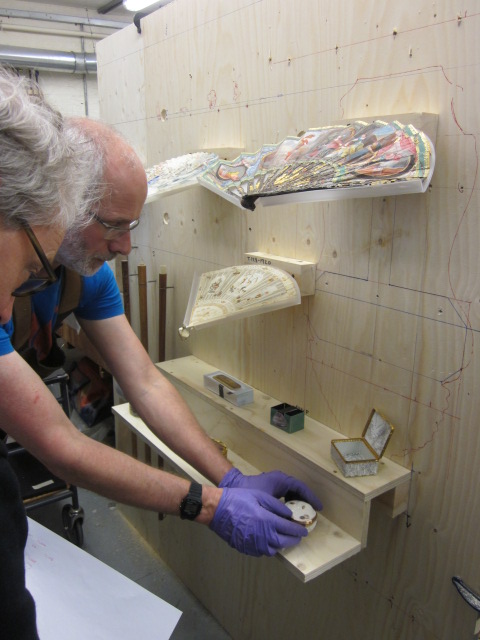
We started the mock-up by laying out the display as detailed in the current design. The case is rather shallow so visitors will be able to get very close to the objects but the angle the fans need to be at is not ideal for ensuring easy viewing. One of our main concerns was to see how the height and angle of the fans would affect visitors’ ability to clearly view them and to ensure that they don’t overshadow other objects.
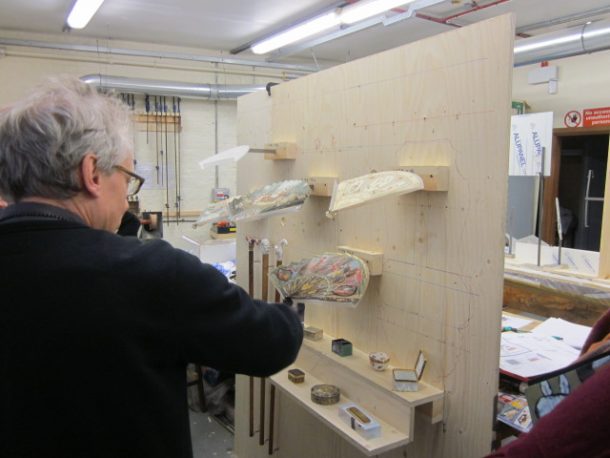
We want to make good use of the space in the case, without obscuring the view of any objects. We were concerned that the fan mount projecting above the cane-handles and sword made them look rather cramped and overshadowed, so we tried that mount and slightly lowering the canes and sword.
It became apparent that the case could only comfortably hold four fans in an accessible manner. The fan mount you can see in the top-left corner of the photograph above was too high to be comfortably viewed by visitors (who of course come in all different heights!). We tried removing this mount and it was felt that the whole display ‘breathed more easily’.
Although it is always disappointing to ‘cut’ an object at this stage, it was felt that this was for the benefit of the whole display. As the amount of time that these fans can safely be displayed is rather short, it is very likely that the cut fan will eventually make an appearance in the display as a ‘rotation’ replacement for one of the others in the future.
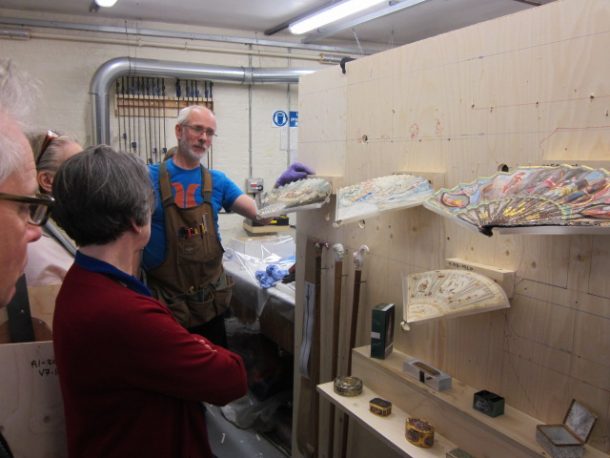
We also needed to check how the arrangement of boxes on the tiered shelf worked when the lids of particular snuff boxes are open – these will each have a small custom-made mount to hold and support the lid.
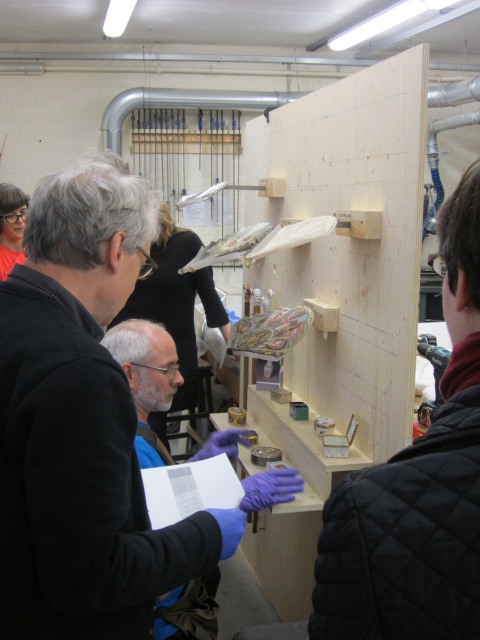
It’s sometimes interesting to note what shorthand terms come to be used when referring to different objects. In the midst of shuffling around objects on the shelf, this brass tobacco box came to be christened ‘The Eclair’!
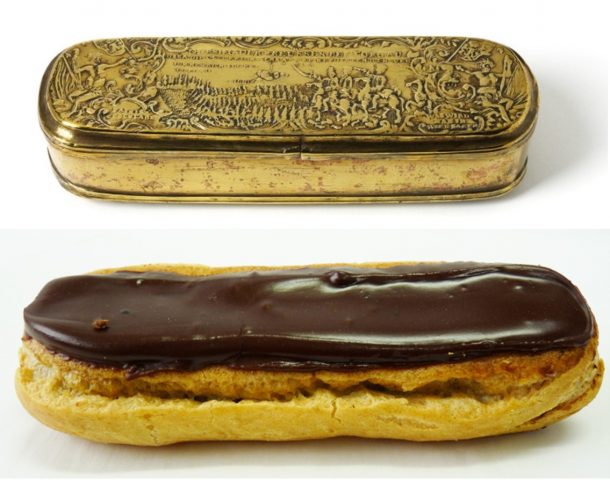
After lots of consideration and discussion, we arrived at a final arrangement for the display, that will allow the objects to be visible, secure and supported. I was then able to snap a number of photographs to document the final layout, which will serve as a guide when we finally install the objects in the galleries.
